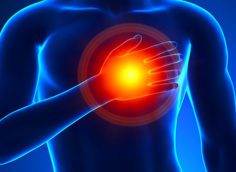The purpose of standing on top of an aerobic step (or some other slightly elevated surface) is to gain an increased range of motion than what you'd have if you did the same exercise standing on the floor.
That's why, when performing deficit reverse lunges, the goal is to lightly tap your back knee to the floor at the bottom of each rep. The same goes for barbell deadlifts and RDLs. The goal is to make sure the weight plates tap the floor on each rep.
But using a step to perform deficit reverse lunges, deadlifts, or Romanian deadlifts gets misused when people don't actually perform the exercise with greater range of motion than they would if they were on the floor. It makes no sense.
Don't believe me? Think about reverse lunges. If you're starting on the top of the step then stepping backward onto the floor, but you're not lowering your back knee below the level of the surface you're standing on, then you just defeated the purpose of the deficit.
Same concept with deadlifts and RDLs. If you're not lowering the plates below the level of whatever you're standing on, then the deficit does you no good. Standing on the floor would've been just fine.
Although this should be obvious, there are countless instances of people in the gym failing to move through an increased range of motion while standing on an elevated surface because they're simply copying something they saw someone else do without having a clue as to why they're doing it.





